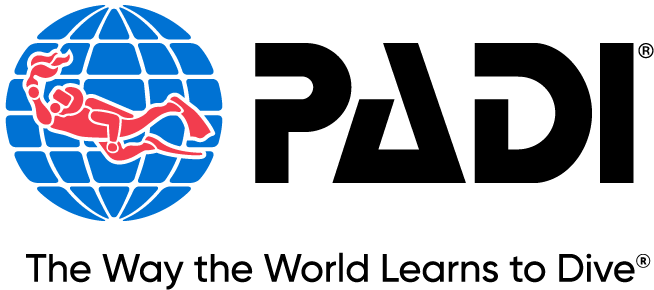
Diving Equipment
Good diving equipment is essential to diving safely and securely. Diving equipment helps you breathe underwater, protects your skin, regulates your buoyancy and makes swimming as easy as possible. Complete diving equipment is quite expensive. Fortunately, you can rent equipment at most locations and diving schools. This allows you to properly test most of the items before you decide to buy. The following items belong to the standard diving equipment.
The diving suit – dry suits and wet suits
Diving suits come in many different types. The main distinction is made between wet suits and dry suits. Most recreational divers dive in wet suits. Wet suits are usually made of neoprene and fit tightly to the body. A thin layer of water forms between the suit and the body, which is first warmed up by the body and then provides insulation. A wetsuit is between 2 and 8 millimetres thick and also comes in versions with coverage for hands, head and feet.
Dry suits are looser around the body and are worn over a layer of clothing. Tight seals at wrists, ankles and neck keep the water out. Dry suits, therefore, offer better insulation when diving in colder waters or in winter. However, dry suits are more expensive and encounter much more resistance when swimming than a tightly fitting wetsuit.
Mask and snorkel
Wearing a good mask, as divers prefer to call it, is essential when diving. In the end, of course, diving is all about being able to clearly see everything you encounter underwater. Therefore, a diving mask should be comfortable and allow the largest possible field of vision. Thanks to the silicone edges of modern diving masks, they generally fit the diver’s face very well. A good diving mask also includes the nose and has an adjustable strap so that it can always be adjusted so that the diving mask has the optimal fit.
As long as you are at the water’s surface, it is best to use a snorkel. The snorkel is then also generally part of the standard diving equipment.
Fins
Fins are used by divers to move smoothly through the water. A good diving fin is solid along its length, which is often achieved by having solid raised edges from the side of the foot to the tip. These also ensure that fewer water slides down the side of the blade, which would mean lower drag and, hence, speed. Across the width, on the other hand, the fin should be flexible. This is achieved, for example, by inserting several rubber strips along the length of the fin, making it concave when swimming. While for snorkeling a simple fin is often sufficient when diving it is important that your fins allow you to gain speed and reach depth. When buying, an adjustable (open-heel) fin is often chosen so that it can also be worn with diving shoes.
Air regulator and air cylinder
When you dive, you take a scuba tank, also known as a compressed air tank or scuba cylinder, into the water. This contains compressed air that you, as a human being, cannot breathe in that way. The regulator returns this pressure to the ambient and guides the air through a hose to the diver’s mouthpiece. The ambient pressure depends on the depth of the diver. At the water surface, the pressure is 1 bar and with every 10 meters, you descend further below this surface, and the pressure increases by another 1 bar. As long as the diver remains at the water’s surface, a snorkel is generally used, saving precious compressed air. Sport diving usually uses a regulator consisting of two stages (the first stage is on the cylinder valve and the second stage is in the mouthpiece).
An Alternative Air Supply, better known as an octopus, is also part of the basic equipment. The octopus is a spare breathing regulator. It is used if the primary regulator fails, or as an air supply for another diver (if they run out of air, for example). The octopus is usually bright yellow in color and has a long hose.
Dive tanks come in different materials, such as aluminum, steel and carbon. They come in different sizes, the most common being the 10-, 12- or 15-liter bottle and usually have a filling pressure of 230 or 300 bar. It should be clear that both the diving cylinder and the regulator are essential parts while diving. So always make sure this equipment is inspected and in order.
Buoyancy vest and weight belt
The lifejacket is used to hang and fasten the regulator, weight belt and compressed air cylinder. The weight belt can be integrated into the life jacket or worn separately. The Buoyancy Jacket and weight belt are worn over the diving suit and serve to regulate the diver’s buoyancy. The more lead in the belt and the less air in the trim jacket, the lower the diver will descend. To ascend again, the trim jacket can be refilled with air.
Diving instruments in the diving equipment
Every diver needs diving instruments that provide data on the depth, and the pressure in the cylinder. Traditional diving equipment therefore also consists of a depth gauge and a manometer. The pressure gauge indicates the remaining pressure, basically giving information on how much air or gas is still present in the cylinder. The depth gauge and pressure gauge can sit together in a dive console. Often, an underwater compass is also added to standard diving equipment and a dive watch. Nowadays, diving with a dive computer is also common.


